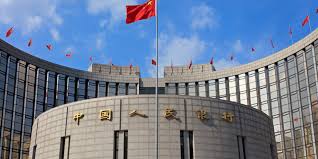China opted to keep its key lending rates unchanged on Thursday, signaling a focus on financial stability rather than aggressive interest rate cuts to support economic growth.
The People’s Bank of China (PBOC) maintained the one-year loan prime rate (LPR) at 3.1% and the five-year LPR at 3.6%.
These benchmark rates, which influence corporate and household borrowing costs, are set monthly based on proposals from select commercial banks.
While the one-year LPR primarily impacts business and consumer loans, the five-year rate is a key reference for mortgage lending.
The decision was widely anticipated, aligning with forecasts from a Reuters poll. It comes as Beijing balances the need for economic stimulus with efforts to prevent excessive financial risks.
Yuan stability and economic policy priorities
Speaking at a financial conference in Saudi Arabia on Sunday, PBOC Governor Pan Gongsheng emphasized that maintaining a stable yuan is crucial for both domestic and global financial stability.
He noted that a stronger US dollar puts pressure on many currencies, but the yuan has remained relatively steady.
However, the Chinese currency has depreciated by 2.5% against the dollar since Donald Trump’s election victory in November.
Pan highlighted that China is shifting toward consumption-driven growth while reinforcing its commitment to a proactive fiscal policy and accommodative monetary measures in 2025.
However, the central bank faces a complex challenge—defending the yuan’s value while trying to stimulate a slowing economy.
China balancing currency defense and economic growth
The PBOC’s strategy of supporting the yuan presents a delicate balancing act.
A weaker yuan could boost China’s export competitiveness, making its goods more affordable in global markets.
However, a stronger currency increases import costs, potentially dampening already fragile consumer demand.
Further complicating China’s economic outlook is the trade policy stance of the newly inaugurated US President Donald Trump.
Since taking office last month, Trump has imposed an additional 10% tariff on all Chinese imports, on top of existing levies of up to 25%.
The tariff escalation adds external pressure to China’s economy, making Beijing’s policy decisions even more critical in the months ahead.
The post China holds key lending rates steady, prioritizing financial stability over rate cuts appeared first on Invezz

